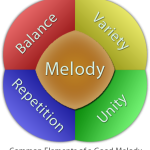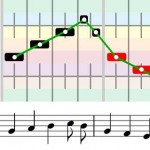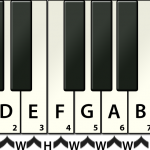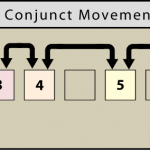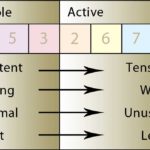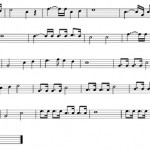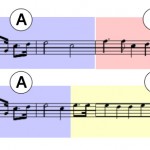Introductory Lesson - Mastering Melodies
What is music?
Music is a sequence or combination of organized harmonious sounds.
A sound is anything that can be heard. Music consists of sounds. To make music requires the organization of those sounds. If a composer wants to master the art...
Lesson One: What is A Melody?
One of the main elements in songwriting is the melody. This lesson will provide you will a brief introduction to what makes a melody.
Lesson Two: Common Elements of a Good Melody
There are four elements that make a good melody. This lesson will take a look at those four elements. In this lesson you will get an understanding of four things a good melody needs. These four elements will give you a better understanding of melody...
Lesson Three: Melody Shape
A melody needs to have a variety of tones. As the tone goes up and down the pitch of those tones create a sonic contour. In this lesson, you will learn about the various shapes a melody can have.
Lesson Four: Musical Range
All music compositions are limited by pitch range. Understanding that there are some limitations, especially with the human voice, or a particular instrument, will help the composer write better melodies. This lesson provides information regarding the...
Lesson Five: The Major Scale
The workhorse in music is the major scale. A majority of music is composed using the major scale. In this lesson the composer will become familiar with the major scale. Having an understanding of the major scale and how it is constructed will assist...
Lesson Six: Basic Melody Tone Movement
A good melody is follows certain common movements between intervals. In this lesson you will learn the various types of interval movement a melody can make.
Lesson Seven: Note Resolution
A melody has feelings of tension and release. This is called resolution. In this lesson you will learn and identify notes in the scale and their unique state of being active or in-active.
Lesson Eight: Melody Needs Rhythm
Rhythm is the treatment of the time element in music. In this lesson you will learn the primary elements that create rhythm in music.
Lesson Nine: The Figure and Motif
The motif or figure is a small piece of a melody that is used as a “seed” to create more musical idea. In this lesson you will learn how to create a motif that can be used to start a melody composition.
Lesson Ten: Melodic Development Techniques
Variety is vital when composing music. Take an original idea and develop it using the technique presented in this lesson. In this lesson you will learn how to apply various techniques to create new musical ideas.
Lesson Eleven: Melodic Outline
In any melody there are certain notes that are important to the melody. In this lesson the composer will start with a basic melodic idea then apply various techniques to create a melody from that outline.
Lesson Twelve: The 4 Measure Phrase
The 4-measure phrase is the gold standard in creating melodies. Think of this as a complete musical statement. The four measure phrase is a complete musical thought. There are two parts to every phrase. These parts balance each other. In this lesson...
Lesson Thirteen: Form
Form consists of putting musical phrases into specific patterns. Form is the arrangement of musical phrases. It is used in composing sections of a melody. Balance in music is important. There needs to be a certain level of repetition and variety....
Lesson Fourteen: Step by Step Melody Composing
his lesson will walk the composer through several steps in creating an 8 bar piece of music. Using many of the ideas and techniques learned in this book the composer will go through several specific steps to create a complete melody. By the end of this...
Mastering Melodies – Enroll Now


